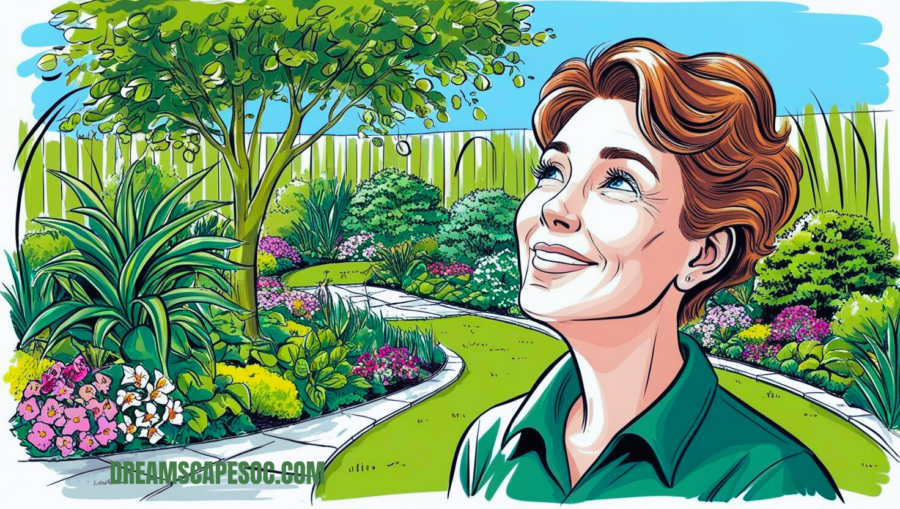Beautifying Your Desert Landscape
A bleak, arid location can be transformed into a lush, sustainable desert oasis with careful planning, inventiveness, and a deep understanding of the local ecology. This paper investigates the concepts and practices of sustainable desert landscaping and provides practical guidance and imaginative ideas to help you create an environmentally responsible outdoor area. This guide’s information and ideas will help you become an expert in desert landscaping, from choosing drought-tolerant plants to using water-saving methods.
Click here for instant access to Landscaping Design Ideas.
Introduction
Although desert landscaping has its own set of difficulties, it also gives the chance to design beautiful and environmentally friendly outdoor areas. The essential components of desert landscaping, such as plant selection, irrigation techniques, and design ideas, will be covered in this article. We’ll go into great detail on how to design and implement a desert landscape that can endure and flourish in arid environments. With the aid of useful graphs, charts, and bullet points, you will gain a thorough understanding of sustainable desert landscaping techniques. Lastly, we’ll provide additional ideas and a frequently asked questions section to answer frequently asked topics.
Transform Your Outdoor Space Today – Download Your Free Landscaping and Gardening Checklist
The Importance of Planning in Desert Landscaping
If you live in a dry climate, your desert landscaping will require more planning than in other regions. Desert landscaping must include plants and trees that can survive with much less water. Selecting the right plants and designing a landscape that aligns with the natural environment is crucial.
Key Considerations for Desert Landscaping:
- Water conservation measures include choosing drought-tolerant plants and implementing effective irrigation systems.
- Soil Quality: Understanding and improving the soil’s ability to support plant life.
- Climate Adaptation: Choosing plants that thrive in hot, sunny conditions.
Drought-Tolerant Plant Selection Guide
Plant Name Type Height(FT) Spread(FT) Water Sunlight
———————————————————————————————————————–
Longwood Bluebeard Shrub 3-4 2 Low Full Sun
Autumn Joy Perennial 1.5 to 2 1.5 to 2 Low Full Sun
Agave Succulent 2 to 5 3 to 6 Very Low Full Sun
Yucca Perennial 3 to 4 2 to 3 Low Full Sun
Using plants well-suited to desert conditions is essential for a successful landscape. These plants tolerate drought and thrive in poor-quality soil, making them ideal for arid environments.
The following plants are suggested: Longwood Bluebeard, a deciduous shrub with silver leaves and clusters of blue flowers, is renowned for its resilience and scent.
A perennial that attracts butterflies and adds visual appeal, Autumn Joy features distinctive flower clusters and colorful foliage.
Agave is a resilient succulent with architectural foliage that needs little maintenance and water.
A perennial excellent for producing visual impact, yucca has towering flower stalks and stunning, spiky foliage.
Efficient Irrigation Techniques
While installing complex irrigation systems is possible, incorporating plants that thrive with minimal water is a more straightforward and sustainable approach. Efficient irrigation techniques are vital for desert landscaping success.
Irrigation Techniques:
Drip Irrigation: Reduces water waste and evaporation by delivering water straight to plant roots.
In order to ensure even plant distribution, soaker hoses gradually release water along their length.
Harvesting rainfall and storing it during dry seasons is known as rainwater harvesting.
Benefits of Efficient Irrigation
- Reduces water waste
- Minimizes evaporation
- Ensures targeted watering
- Conserves resources
Design Principles for Desert Landscaping
A desert ecosystem that is both aesthetically pleasing and useful requires careful planning and consideration of numerous factors.
Design Recommendations:
Incorporate hardscaping: Use rocks, gravel, and stones to give the landscape structure and texture.
Provide Shade: Make use of shade sails, pergolas, and strategically positioned trees to shield against the sun.
Use Mulch: Apply mulch to retain soil moisture and reduce evaporation.
Add Water Features: Introduce small water features like fountains or ponds to enhance the oasis feel.
Design Elements for Desert Landscaping
Element Purpose
—————————————————————————————————————–
Hardscaping Adds texture and Structure
Shade Structures Provides relief from the sun
Mulch Retains soil moisture, reduces evaporation
Water Features Enhances visual appeal and oasis feel
Maintenance of Desert Landscapes
Proper maintenance is essential to keep your desert landscape thriving and looking its best.
Care Instructions:
Regular Pruning: To promote robust development, remove any dead or overgrown branches.
Watch the irrigation: Inspect irrigation systems and make necessary adjustments.
To check the health of your soil, test it periodically and add organic matter if needed.
Key Maintenance Practices
- Regular pruning
- Monitoring and adjusting irrigation
- Testing and amending soil
Finishing Remarks
Plan meticulously, pick the perfect materials, and always keep an eye on the future maintenance of your beautiful creation. Who knew that the desert could bloom with such possibility and surprise?
Examining the Questions on Desert Design
What are the advantages of desert landscaping with drought-tolerant plants?
A: Drought-tolerant plants are perfect for desert gardens since they need less water, grow well in poor soil, and do well in hot, sunny weather.
How can I water my desert garden efficiently?
A: To offer targeted watering and reduce water waste, use drip irrigation, soaker hoses, and rainwater collection.
What aspects of desert landscape design should I take into account?
A: To design a landscape that is both aesthetically pleasing and useful, incorporate water features, mulch, shade structures, and hardscaping.
How can I keep my desert landscape in good condition?
A: To keep your landscape looking nice and healthy, regularly trim plants, examine the condition of the soil, and keep an eye on irrigation systems.
What are some recommended plants for desert landscaping?
A: Longwood Bluebeard, Autumn Joy, Agave, and Yucca are hardy choices for desert landscapes due to their resilience and low water needs.


